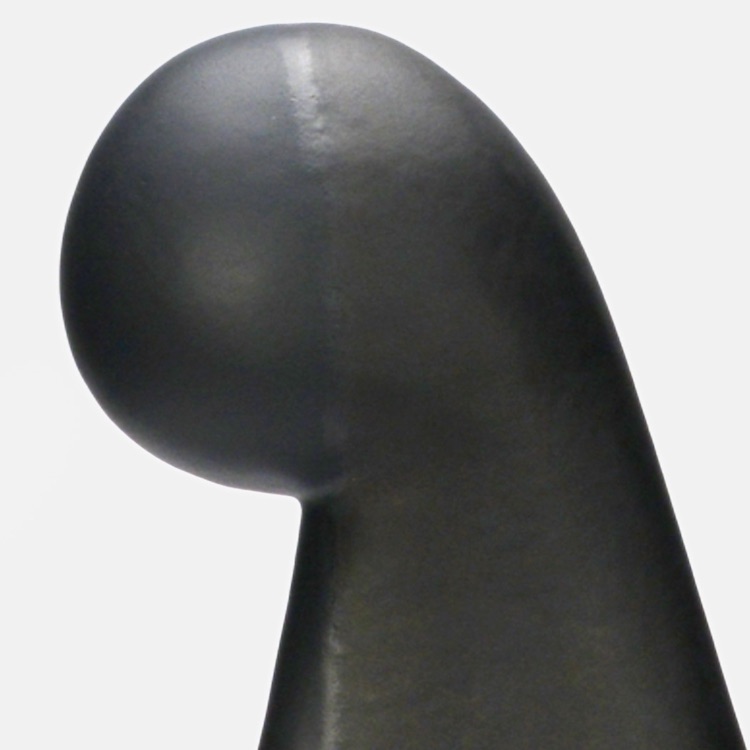SANTA FE, New Mexico —There are works of art which I can quickly digest and rattle off about – the process, the kinesthetic creation and the final product. Then there are those, in which, after viewing, I need to sit with. Their presence so profound, transcribing the visual form into a written one seems to belittle and cheapen them. I’ve been mulling over James Marshall’s Black Interfusion (February 24 – May 6, 2017) sculptures at Peters Projects for a while now and my conclusion is that these works transcend the perceptual experience existing, rather, between.
“For me, these works vibrate between one possible identification and another. That leaves the work open to multiple interpretations. That’s the bedrock of life and existence, that constant openness to the multiplicity of things.”
Marshall’s geometric sculptures are like a universal vocabulary. They are the visceral gestalt of a tactile, visual, kinesthetic and even oral language. Whatever your perceptive preferences, Marshall’s works decidedly emerge. In its most reductive form, the sculptures are like dark matter; not necessarily perceived and understood in the way our biological senses allow, but never the less, is.
Through these exploration of in between, each form reveals a universal experience; each existing singularly or they can serve together, playing off each other, creating a ceramic corps de ballet. Marshall tells Santa Fe’s Pasatiempo:
“In all of the work that I’ve done, the idea of the liminal is one of the foundations for how the work manifests in the studio.”
Each piece has a two-toned, grayish-black surface, two distinct glazes with different textures and finishes, Pasatiempo writes. The seam created where the two tones meet separates one part of a sculpture from another. His piece Black 397, for instance, has a vertical division off-center. One side of the work is a deep black color, while the other is more of a gunmetal black. The subtle shift in tone and density of color from one area of the surface to the other brings depth and dimensionality to the sculpture.
“The dimensionality manifests because not only are there two tones of grayish black, but in some of the works there are two seemingly disparate forms that are beginning to fuse together or that have fused together into unitary form,” he said. “It’s almost like an object moving through space, and it reaches a velocity of such magnitude that it starts changing its shape, but it hasn’t lost elements of its original shape.”
Whatever your perceptive preferences, I leave you with these images of the spaces between:
Watch this discussion between Garth Clark and James Marshall.
Do you love or loathe these works of contemporary ceramic art? We want to hear from you.











James: Your new work is terrific, those Black shapes with the dark,varied and deep glaze have really expanded your work to the edge of the form and beyond. J. Stephenson would have really been excited to see these and your development. However, I didn’t think seeing these works on the computer screen shows what such a variation in a Black glaze can do the so called negative space between and around the forms. To describe this I feel its like sitting in a dark Buddhist cave and looking to the light through a small gate opening.
Beautiful sculpture and discussion with Garth and James. It was important to be reminded about intentionally going into the “forest” of not knowing and James feeling to be a conduit as the sculpture came through him and was not made by him.
Thank you both.